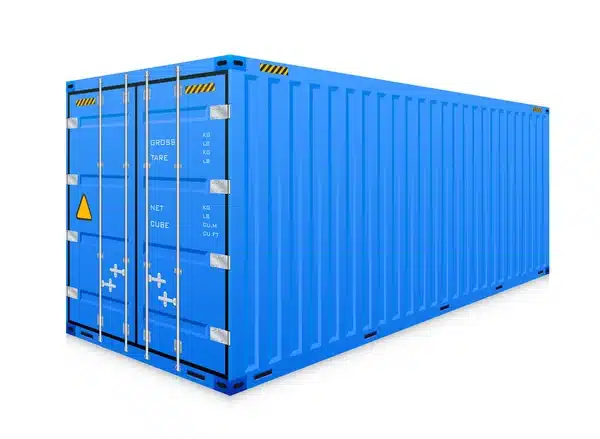The shipping industry constantly evolves, and the choice between Shipper Owned Containers (SOC) and Carrier Owned Containers (COC) has become more critical for businesses that need to optimize their logistics strategies. Understanding the advantages and differences between SOC and COC containers allows companies to make more informed decisions that impact cost, efficiency, and reliability.

In this comprehensive article, we will explore the differences between SOC and COC containers, the rising demand for SOC containers due to global supply chain shifts, and which major American companies have leaned heavily on SOC containers for their logistics needs.
What is an SOC Container?
An SOC (Shipper Owned Container) is a container owned by the shipper or the company responsible for the cargo. Rather than leasing the container from the carrier, the shipper has full ownership, giving them control over the container’s movement and reducing reliance on carriers’ availability.
Key Features of SOC Containers:
- Ownership: Shippers own SOC containers, giving them flexibility and control over their usage.
- Avoidance of Fees: By using SOC containers, shippers can avoid demurrage and detention fees typically incurred with delayed COC containers.
- Flexibility: Shippers can move SOC containers across different shipping lines or carriers, allowing them to choose the best options without being tied to a specific line.
Increased Demand for SOC Containers in 2022
With the surge in global shipping needs due to the rise of the China-Europe and Russia-Europe rail routes, SOC containers have seen unprecedented demand. Railways such as the China-Europe Railway and Russian Railways have created new transportation corridors, making SOC containers essential for businesses looking to reduce demurrage fees and gain more control over logistics. The geopolitical impact of these rail lines, combined with shifting trade patterns, has led to a significant shortage of SOC containers in 2022.

The demand for SOC containers has skyrocketed, especially for businesses operating on the China-Europe trade routes. These containers provide businesses more freedom in managing their goods through the ever-evolving geopolitical landscape, reducing the risk of delays and costly port charges.
What is a COC Container?
A COC (Carrier Owned Container) is a container that the shipping line or carrier owns and provides. The carrier manages the container throughout the shipping process and handles its return after delivering the cargo.
Key Features of COC Containers:
- Carrier Ownership: COC containers are owned by the carrier, meaning the shipper does not need to worry about managing the container once it has been returned to the carrier.
- Ease of Access: Since the carrier manages and provides the container, COC containers are more readily available and convenient for shippers with lower or irregular shipping volumes.
- Complete Service: The carrier manages the container from pickup to delivery, making this a hassle-free option for many shippers.
Key Differences Between SOC and COC Containers
| Feature | SOC (Shipper Owned Container) | COC (Carrier Owned Container) |
|---|---|---|
| Ownership | Shipper | Carrier |
| Costs | No leasing fees, but initial investment required | Leasing fees included in the freight rate |
| Flexibility | High—shipper can choose any carrier | Limited to carrier providing the container |
| Availability | Limited by shipper’s own container stock | Widely available with carriers |
| Demurrage and Detention | Avoided as the shipper owns the container | May incur demurrage and detention fees |
Advantages of Using SOC Containers
Cost Control:
SOC containers help businesses avoid expensive demurrage and detention fees, which are common when using COC containers. These charges occur when a shipper exceeds the free time allowed by the carrier. With SOC containers, the shipper has greater control over the timeline and avoids these fees altogether.
Flexibility:
SOC containers give shippers the freedom to choose any carrier. This flexibility is critical during periods of high demand, such as the 2022 surge in the China-Europe and Russia-Europe railway trade routes, when available containers were in short supply.
Availability During Shortages:
In markets with high container demand—such as North America and Europe—SOC containers ensure that shippers aren’t limited by carrier container shortages. The rise of trade routes like the Russia-Europe Railway has heightened the demand for SOC containers, especially for businesses wanting to avoid the logistical complications associated with carrier-owned containers.
High Demand from Leading Companies:
Large global importers such as Amazon, Walmart, and Home Depot have increasingly used SOC containers for their massive logistics operations. This shift allows these companies to navigate international shipping routes without being affected by container shortages, leading to more efficient and reliable deliveries.
Advantages of Using COC Containers
Convenience:
With COC containers, the carrier handles the container from the point of pickup to delivery and even its return. This ease of management is perfect for businesses that prefer a hands-off approach to container logistics.
No Upfront Investment:
Businesses using COC containers don’t need to purchase their containers, making this option cheaper upfront. The carrier provides the container as part of the overall shipping service.
Widely Available:
Carriers typically have a large fleet of COC containers, making them readily available for shippers without the hassle of container management.
SOC Container Costs and Why Demand is Rising
The demand for SOC containers has surged due to various economic factors, including container shortages, higher shipping rates, and the rise of new shipping routes like China-Europe rail freight. While purchasing SOC containers comes with an initial investment, businesses are increasingly choosing this route to avoid escalating port charges and demurrage fees.
SOC Container Cost Estimate:
- 20ft Used SOC Container: $1,500 – $3,000
- 40ft Used SOC Container: $2,500 – $5,000
Once the initial investment is made, ongoing costs are lower since the business is not paying leasing fees to carriers, and they have full control over the logistics process.
COC Container Costs and Management
The carrier manages COC containers and includes them in the overall freight costs. However, businesses that use COC containers often incur demurrage and detention fees if their containers remain in port beyond the free time allowed by the carrier.
SOC or COC – Which is Right for Your Business?
The decision to use SOC or COC containers ultimately depends on your shipping needs and business strategy.
- If you’re shipping frequently, on high-demand routes like China-Europe or China-USA, investing in SOC containers could save you significant costs in the long run by avoiding demurrage fees and granting more control over container availability.
- On the other hand, if your shipping needs are sporadic and you want a hands-off logistics experience, COC containers offer convenience and ease of use with no upfront container investment.
Whether you’re a small business or a large multinational corporation like Amazon or Walmart, understanding the differences between SOC and COC containers can help you make the right choice for your logistics strategy and ensure a smooth, cost-effective shipping process.
Contact us today for reliable and cost-effective shipping solutions, including SOC container services, and let us meet your logistics needs with efficiency and expertise!


